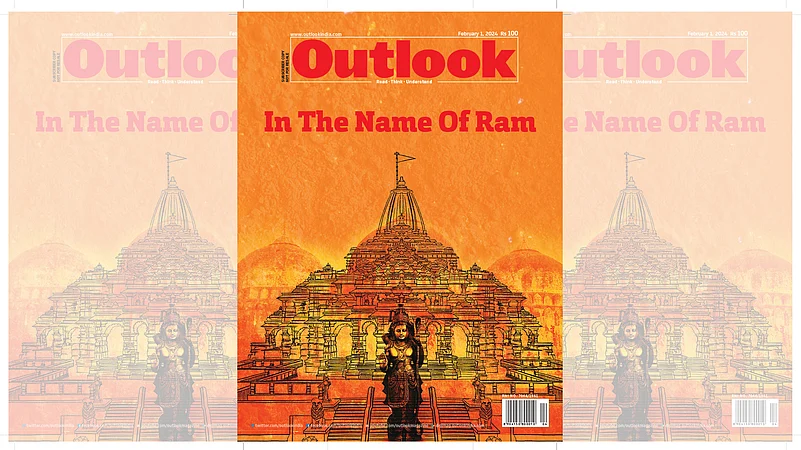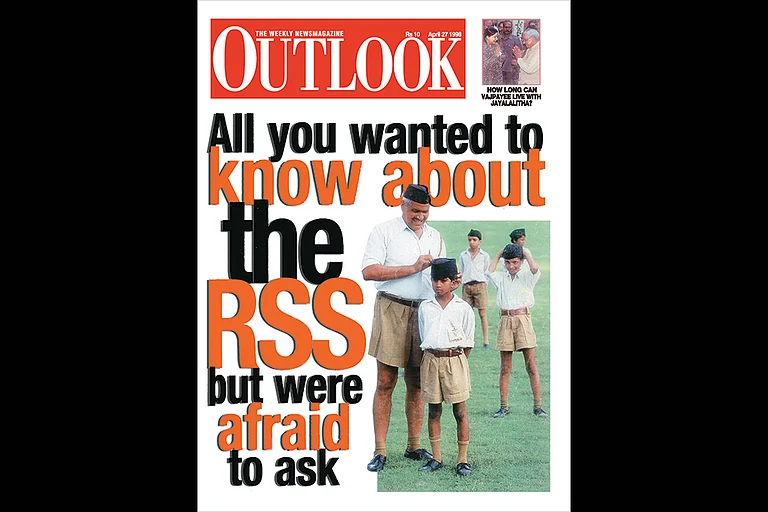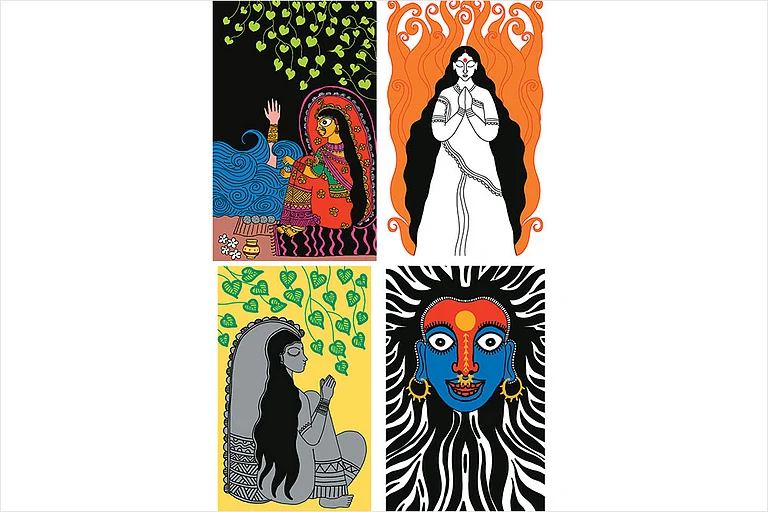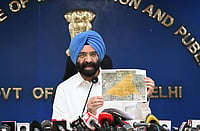
The Ramayana has many retellings, though a 1980s TV serial popularized a single narrative.
Outlook has explored the epic’s living pilgrimage, political shifts, and women’s stories.
Ayodhya remains central, blending mythology, history, and contemporary politics.
Ramayana is a composite of many stories told to us by many men and women. The many retellings—from Valmiki’s Sanskrit verse to regional, tribal, and folk adaptations—reflect the vastness of India itself.
But all this was challenged by the reductive reading and broadcasting of a TV serial called Ramayan in the late 80s that reiterated a single narrative that limited the scope of any other interpretation. That was the time when mythology entered the political sphere and Ayodhya became the geographical node for the preservation of “nation” and “culture”.
That’s how “othering” became a norm. Not that it wasn’t there before all this, but it gained momentum and eventually, got State sanction. The Hindu right wing utilised the reverential power of the epic, reduced and appropriated.
At the centre of all of this it all stands Ayodhya, a city both real and imagined, sacred and contested, forever tied to the search for Rama.
Outlook Magazine has explored the many interpretations of the Ramayana, the essence of Ayodhya and the stories of women characters of Ramayana whose tales have largely remained hidden over the centuries, across various issues.
In the October 10, 2022 issue, The Many Ramayanas, we published ‘The Many Faces And Transformations Of Ram And His Story’, where Ashutosh Bhardwaj traces the deity’s presence among Shaivites in Kashmir, Ramnamis in Chhattisgarh, and the politics of Ayodhya to the many interpretations and transformations of Lord Ram across India.
The article Ram Van Gaman: Where Ramayana Is Not Just A Story, But Is Actually Alive follows author Amish Tripathi and a producer-director team as they travel and film the “Van Gaman” path, which has been turned into a living pilgrimage and tourism route through places like Chitrakoot, showing how the epic becomes tangible in towns, forests and rituals.
In the February 1, 2024, issue, In The Name Of Ram, Outlook Magazine delves into the evolving political and cultural landscape of India in the context of the Ram Janmabhoomi movement and the inauguration of the Ram Mandir in Ayodhya.
In New Ayodhya: Temple Town, Tinseltown, Tanul Thankur writes, “The new Ayodhya, remodelled as a glitzy temple town, exudes celebratory spirit and promises limitless development. But a closer look reveals its contradictions and discontent,” and examines the transformation of Ayodhya into a modern temple town.
Delving into the experiences of Muslims in Ayodhya as the inauguration of the Ram Mandir nears, Ayodhya Our City Too': Muslims Relive Memories Of Violence As Ram Mandir Inauguration Inches Closer, highlights their reflections on the city's history, particularly the 1992 Babri Masjid demolition, and their hopes for peace and coexistence in the future.
In Outlook Magazine’s November 1, 2023, issue, Epic Sisterhood, we looked at the women of the Ramayana as an interrogation of dominant narratives. Retelling, an interventionist approach, is to bring out sidelined voices and stories.
In Devi Vs Rakshasi: The Portrayal Of Women In Ramayana, Mainin J A nandani looked at how the women of Ramayana seem to have been discriminated against, based on their birth, gender, origin, and political belief or background.
As Diwali lights shine across Ayodhya and beyond, the Ramayana’s stories of heroism, devotion, and the often-overlooked voices of women and communities continue to resonate through time. At Outlook, we keep tracing these narratives, exploring their many interpretations and the enduring legacy of the city that anchors them.



























